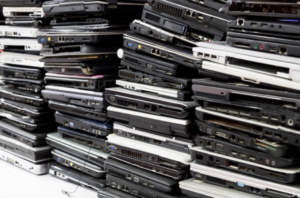One of the biggest challenges that businesses have around data security is that things always seem to be shifting. Every time you bring a new kind of IT system or technology into your organization, you have to figure out how to use it and figure out how to protect any data that it is linked to. Something as seemingly simple as choosing a hard drive destruction service or replacing old equipment can seem formidable when something as important as data security is on the line.
 Business leaders are starting to realize that the data destruction processes they’ve been using for the last several years may not be as secure as they could be.
Business leaders are starting to realize that the data destruction processes they’ve been using for the last several years may not be as secure as they could be.
Unplugging obsolete technology and passing it off to your hard drive destruction service isn’t necessarily enough to completely protect your organization’s sensitive data. That’s why many companies have started incorporating IT asset disposition processes into their data destruction policies.
What is IT Asset Disposition?
IT asset disposition, or ITAD, is the process of decommissioning and disposing of electronic equipment and really anything that stores data. It’s a term that’s often used in data-heavy industries, but any business can follow ITAD best practices. Basically the idea is to take a truly comprehensive approach to protecting your data when you’re getting rid of any devices, even before you turn them over to your hard drive destruction service. ITAD principles also call for disposing of decommissioned devices in the most secure and responsible way possible.
Maybe you’re thinking something like, “We already shred our files and devices and work with a hard drive destruction service we trust—aren’t we already handling ITAD correctly?”
Maybe you are! Or maybe there are some weaknesses in your data security processes, and taking a ITAD-driven approach to data destruction would close those gaps.
How Do Businesses Use ITAD?
How your organization puts ITAD into practice really depends on your industry and needs. There are actually ITAD companies that specialize in helping companies with decommissioning and disposing of IT equipment. That kind of service could be useful if a business, say, wants to take out all the servers in its data center and doesn’t have in-house IT experts who can remove all the data from those servers.
Another time an ITAD service is helpful is when a business has a contract with a client that says it’s not allowed to let the client’s data leave the business’s premises for any reason. Or, if your business wants to make a charitable donation of its old IT equipment to another organization but needs to be absolutely sure its data is wiped first. In those cases, it could make sense to bring in an IT asset disposition company that can wipe and decommission all that equipment onsite before taking it away for disposal.
But most businesses can manage their own ITAD programs internally, in partnership with a trusted data destruction company for final disposal. The objective here is just to make sure you’re making the best decisions at every step while disposing of obsolete electronics.
ITAD Best Practices
If your organization already has stringent data security processes in place, you’re probably already in pretty good shape in terms of ITAD best practices. These three practices are the test – you should be doing all three.
- Don’t forget to decommission. Even when you have a reputable data destruction company manage the disposal of your business’s obsolete electronics, there’s always some amount of risk when you give away control of company devices that still hold data. If your data destruction policy doesn’t already call for devices to be wiped of data before they leave your premises, make that change now.
- Manage e-waste responsibly. A well-managed ITAD program ensures that all your business’s obsolete devices are disposed of responsibly after they’ve been decommissioned. If you’re having hard drives and other data-storing devices shredded or otherwise destroyed (as opposed to donating or selling them), verify that your destruction service recycles any recoverable materials. Familiarize yourselves with current e-waste laws and local e-waste resources for safely disposing of any technology that requires special handling.
- Make records of everything. ITAD should create a paper trail. Maintain records of any serial numbers or other identifying details on all technology you’re getting rid of. Track chain of custody and the physical location of each decommissioned item as it moves out of your business. Collect destruction certificates from your hard drive destruction service to keep in your records.
Northeast Data Destruction is here to help your business manage IT asset disposition in the most secure and cost-effective way possible. We’re more than a hard drive destruction service—we’re a resource you can turn to with any questions you have about protecting your company’s data. Contact me today!
